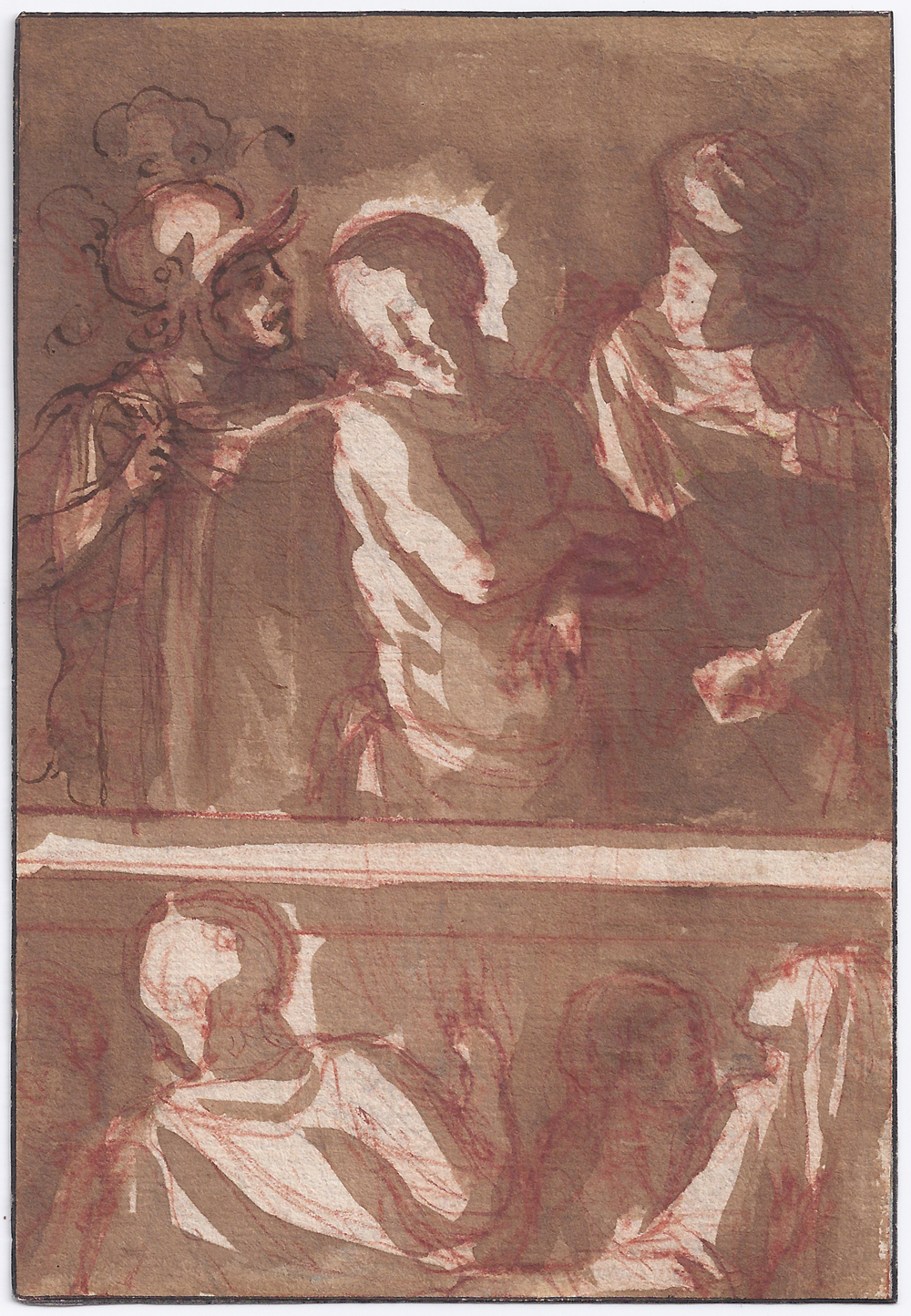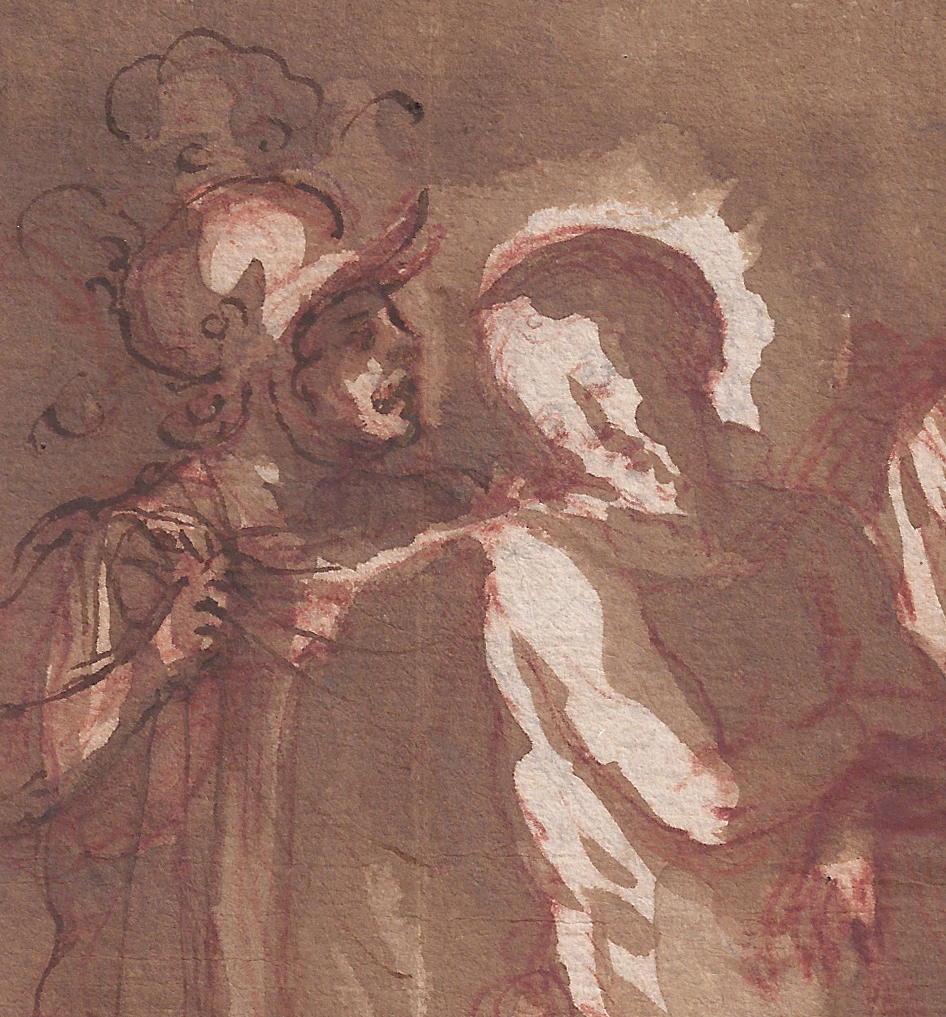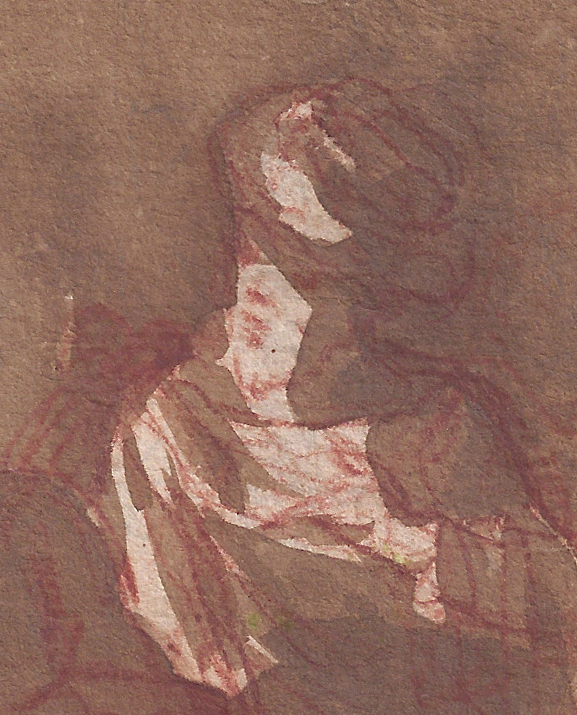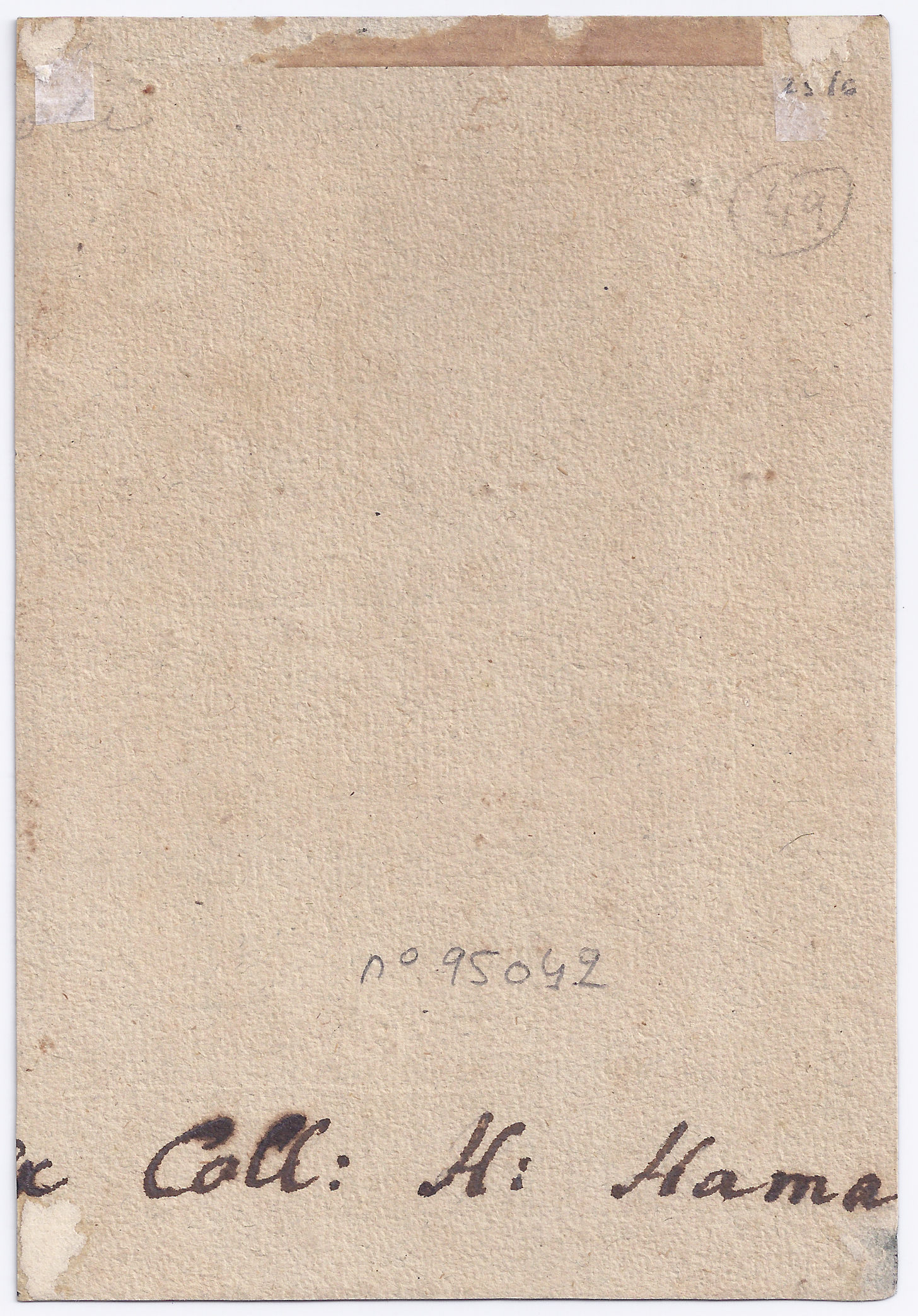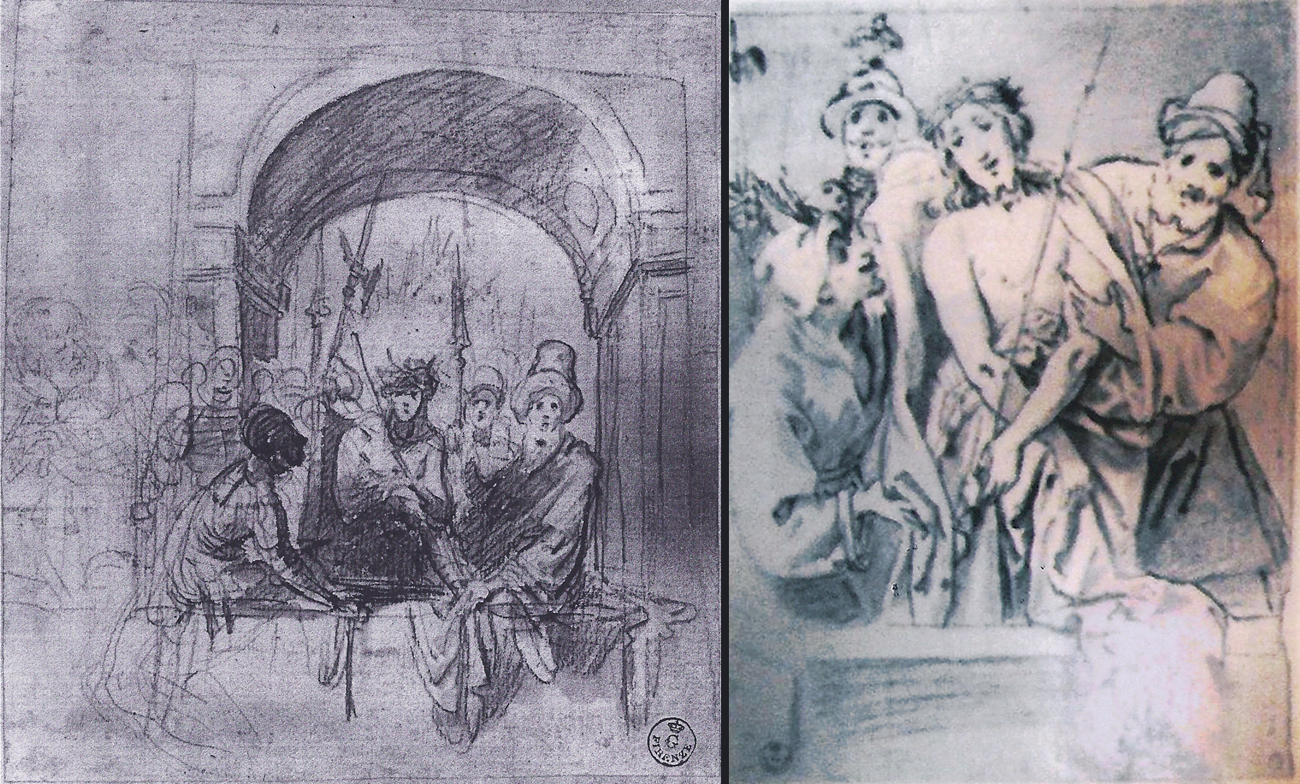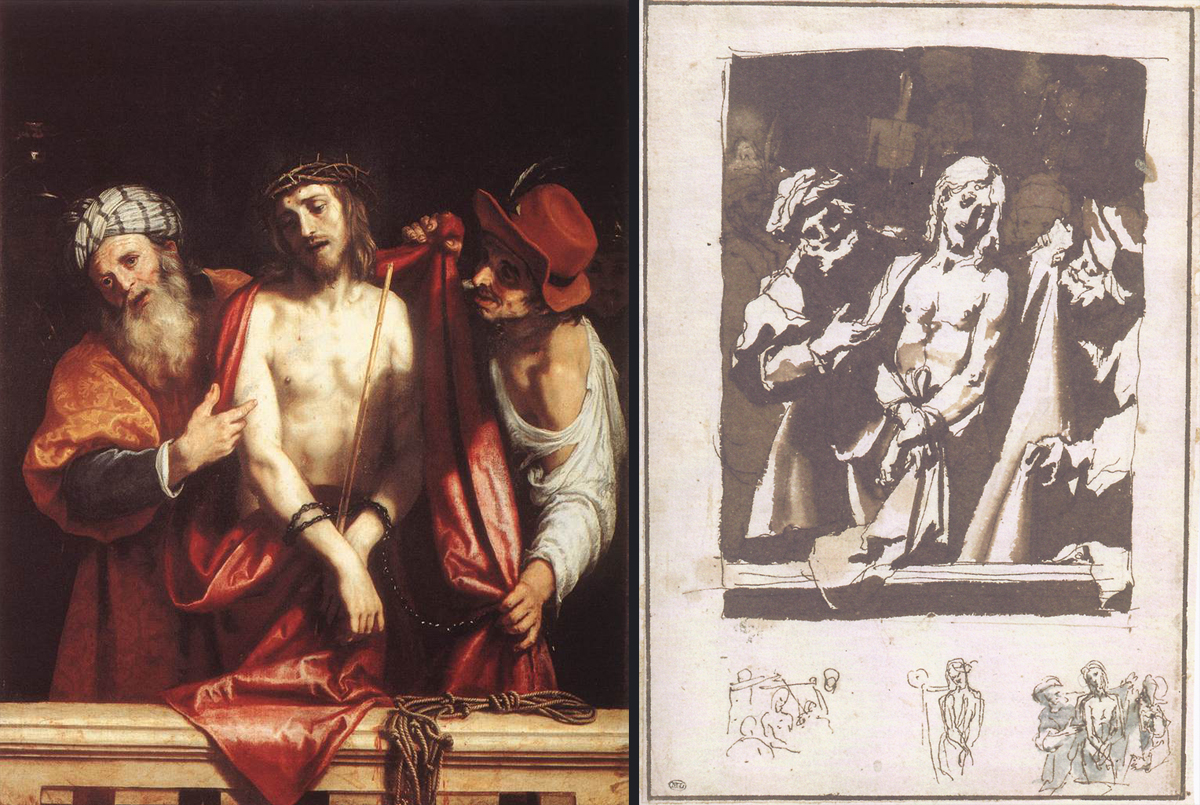GIOVANNI BILIVERTI (Florence 1585 – 1644 Florence)
Giovanni Biliverti (Florence 1585 – 1644 Florence)
Ecce Homo
Red chalk, brown wash, pen and brown ink, black ink framing lines, 172 x 118 mm (6.8 x 4.6 inch)
Provenance
~ Henry Hamal, Liège (late 18th century) (Lugt 1231: partial inscription ‘Ex Coll: H: Hama[l]’, pen and brown ink, on reverse of partial collector’s mount on which the drawing is laid down)
~ Private collection, Paris
***
This strong drawing with its powerful chiaroscuro effect is one of a group of preparatory studies by Giovanni Biliverti for a painting for Cardinal Leopoldo de’ Medici (1617–1675), son of Cosimo II. The painting is lost, but the commission is documented by the artist’s biographer Filippo Baldinucci (1624–1697): ‘e per lo stesso Principe dipinse un Ecce homo, mezza figura’ (‘and for this Prince [Leopoldo] he painted an Ecce Homo, half length’).1 The commission can be dated to around 1641, as Baldinucci mentions another painting for the Cardinal in the same context, which is dated to this year and survives in the Kunsthistorisches Museum, Vienna.
Other preparatory studies for Leopoldo’s Ecce Homo are preserved in the Uffizi, Florence, which show a variety of ideas for the painting in which the artist’s creative processes can be clearly seen.2 The grandest of the Uffizi sheets is inv. no. 9661F, which shows Christ under a Classical arch, surrounded by his captors (fig.).3 Although the Uffizi sheet is more elaborate, the helmeted soldier seen in profile at the left, and Pilate with his distinctive headwear at the right can be clearly recognised in our drawing. In another Uffizi drawing, 2043S, the composition is more condensed, as in our drawing, and includes a female head in profile in front of the balcony, at lower level, as in our drawing (fig.).4
The composition as seen in the present drawing is strongly reminiscent of the treatment of the theme by Biliverti’s teacher, Lodovico Cardi, il Cigolo (1559–1613). Painted in 1607 for Massimo Massimi, it is today preserved in the Galleria Palatina in Florence and is considered to be Cigoli’s masterpiece (fig.). Cigoli in his turn had prepared the composition in a series of preparatory drawings, and one of them, kept in the Louvre, is comparable to our drawing in its tenebrous use of brown wash (fig.).5 Biliverti applied heavy washes also for instance in his Flagellation, sold at Christie’s in 1981.6
Giovanni Biliverti was the son the goldsmith Jacques Bijlivert (1550–1603), who was born in Delft in the Northern Netherlands and headed to Florence in 1573 to head the workshops of Grand Duke Francesco I de’ Medici. Giovanni first studied with Alessandro Casolani in Siena, and entered Cigoli’s studio after his father’s death in 1603, where he would have been closely involved in the creation of Cigoli’s Ecce Homo.7 From 1611 to 1621 he was employed by Cosimo II as a designer for works in pietra dura, In 1636 the artist suffered a serious illness and underwent a sort of religous conversion. From then on he devoted himself almost exclusively to sacred themes.
SOLD
1. Filippo Baldinucci, Notizie dei professori del disegno da Cimabue in qua, ed. F. Ranalli, Florence 1846, vol. IV, p. 307. Baldinucci was a collector of drawings and owned Biliverti's studies now in the Uffizi.
2. Inv. nos. 999F, 1000F, 9611F, 9643F, 9652F, 9603F, 1953S and 2043S; see: C. Thiem, Florentiner Zeichner des Frühbarock, Munich 1977, under cat. no. 90 and A. Petrioli Tofani’s review of Thiem in Prospettiva, no. 19, October 1979, p. 83.
3. Red chalk, brown wash, 204 x 185 mm; Corpus Gernsheim 164 841.
4. Petrioli Tofani, loc. cit., fig. 19.
5. C. Garofalo a.o., Le Rayonnement de Florence sous les derniers Médicis, dessins des XVIIe et XVIIIe siècles, exh. cat. Bayonne (Musée Bonnat) 2006-07, cat. no. 25, pp. 74-75, repr.
6. Black chalk, pen and brown ink, brown wash, heightened with white, on blue paper, 220 x 198 mm; Christie’s, London, 7 July 1981, lot 42.
7. For Giovanni Biliverti, see G.J. Hoogewerff, ‘Giovanni Biliverti’, Mededeelingen van het Nederlandsch Instituut te Rome, III, 1943, pp. 115-39; G.J. Hoogewerff, ‘Appunti sulle opere di Giovanni Bilivert’, Commentari, XI, 1960, pp. 139-56; and C. Monbeig-Goguel and Françoise Viatte, Dessins baroques florentins du Musée du Louvre, Paris 1981, nos. 49-55.
